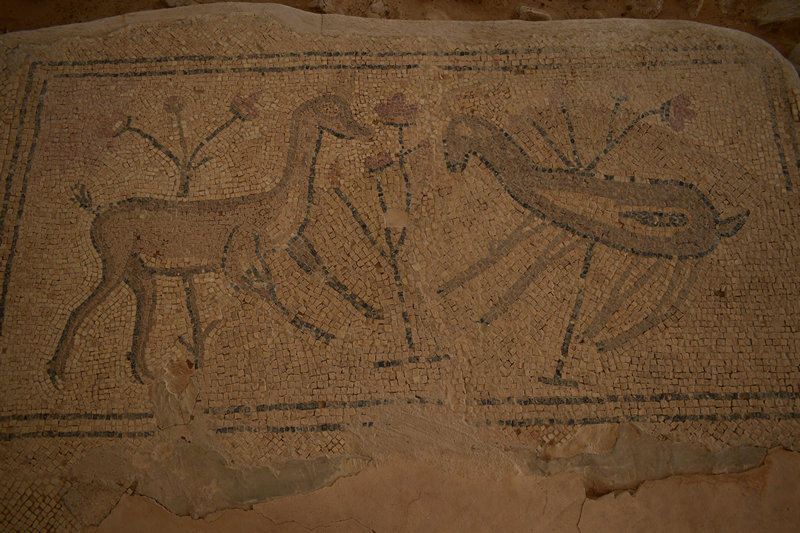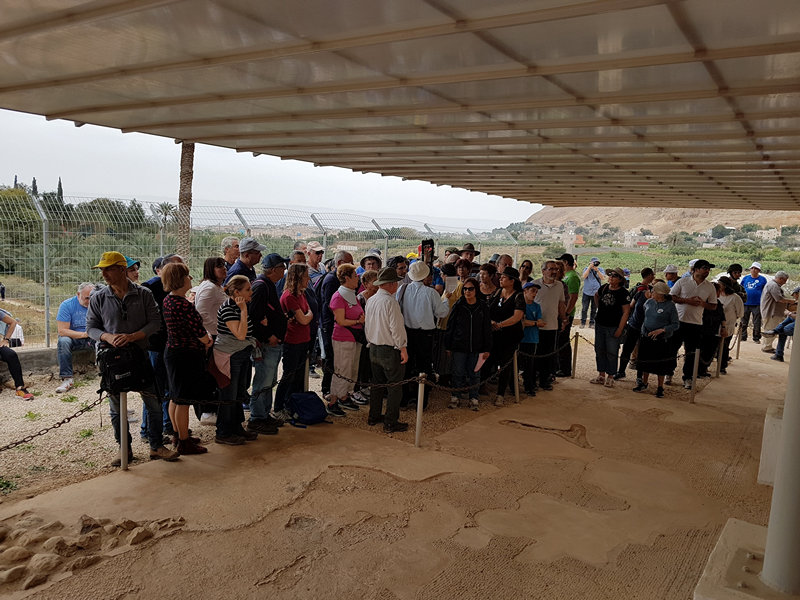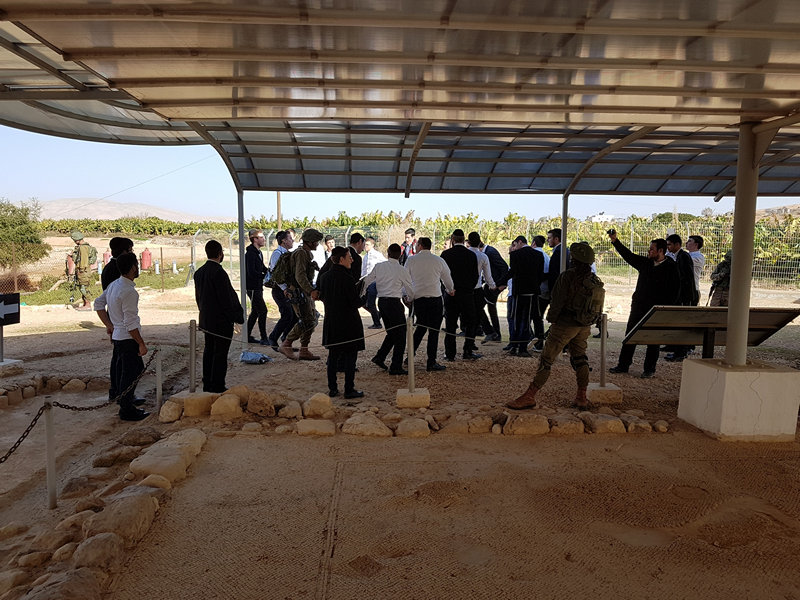The Naaran Synagogue in Antiquity
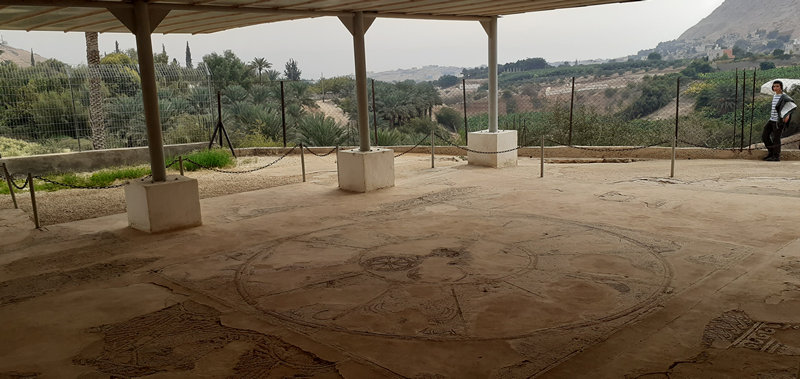
The synagogue and its mosaic
This synagogue bears witness to a 3rd Century (Byzantine era) Jewish town at that place. The synagogue is relatively large, with a surface-area exceeding 100 sq. metres, as can be deduced from the dimensions of its mosaic.
The style is definitely Hellenistic, in stark contrast to the Shalom al Israel Synagogue) – built around the same period and also in Jericho. The mosaic’s centrepiece is a large fortune wheel with a sun-god riding his chariot at its centre, surrounded by the 12 signs of the zodiac. Four female figurines representing the four seasons adorn each of the mosaic’s four corners. The mosaic on each side of the Ahron Kodesh (the Holy Ark) has a Menorah and animal figures, including a representation of Daniel in the lion’s den.
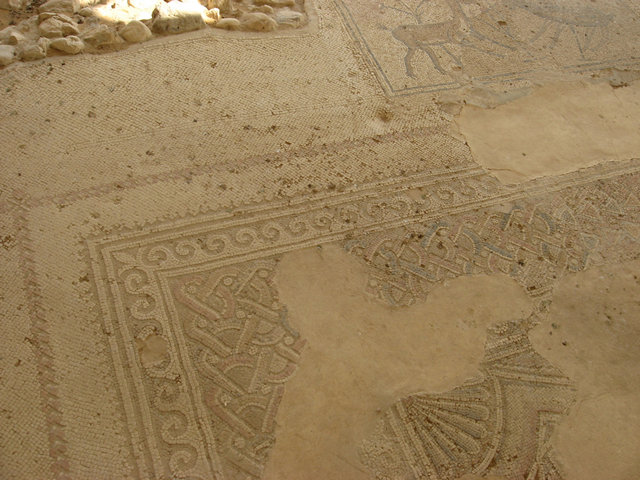
Around the 6th Century, the human representations were defaced by (it is assumed) the community itself, in order (it is assumed) to give the mosaic a character more in tune with Jewish tradition. Similar defacements are to be found in many other synagogues of the period, which also had Hellenistic-style mosaics.
The synagogue points to the south, and not to Jerusalem (The Holy Ark is on the southern end), probably in line with the town’s streets and buildings.
The town of Naaran
To the east of the synagogue, there are steps and signs of an ancient town, which has yet to be excavated.

The town of Naaran mentioned in the Bible was, most probably here. Naaran was a town in the territory of Efraim “It descended from Yanoach to Atarot and to Naaran (נערתה) converged at Jericho, and reached the Jordan river”
(Joshua 16:7). The town of Naaran is also mentioned in the book of Chronicles “Their holdings and their dwelling places: Beit El and its villages, and to the east: Naaran, and to the west: Gezer and its villages, Shechem and its villages, up to Aya and its villages.”
(Chronicles I, 7:28).
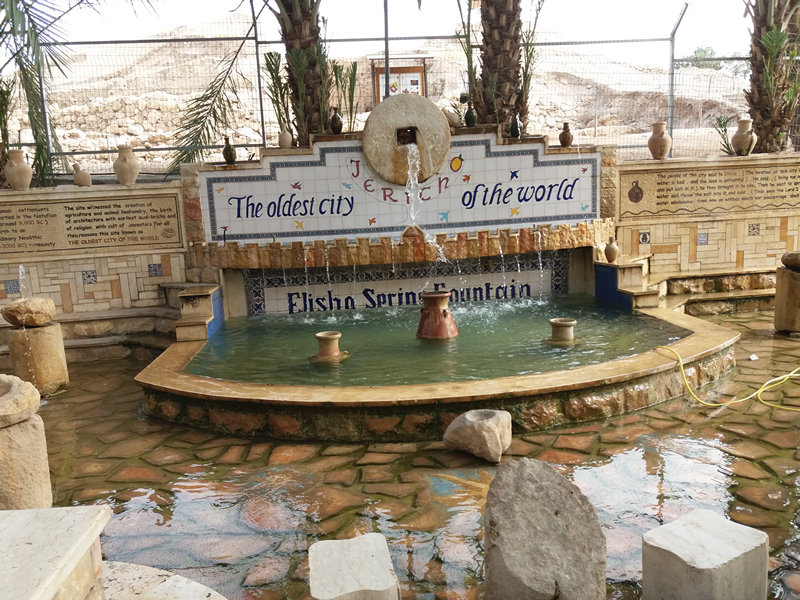
Naaran is mentioned in the Book of Kings II in an incident involving the prophet Elisha. The people of Jericho whose water springs were salty had to buy water from nearby Naaran at an inflated price. The prophet Elisha came to Jericho and sweetened their spring (today known as the Elisha spring adjacent to Tel Jericho), and on the way back to his home in the mountains of Samaria, passed through the town of Naaran (He probably exited Jericho from the north-west, passed Naaran and ascended towards the central Samarian mountain range via the present-day Highway 449). In the Biblical account, he is attacked by youths (Naarim in Hebrew). The commentator Rashi interprets "Naarim" as the inhabitants of Naaran, who lost their income. Naaran’s inhabitants were furious because the prophet Elisha had put an end to their commercial stranglehold of Jericho’s inhabitants:
“(19)The people of the city (of Jericho) said to Elisha, "Behold the city is a good place to live in, as my lord sees, but the water is bad and the land causes people to die. (20)He said, ‘Take me to a new jug and put salt in it,’ and they did so. (21)He went out to the source of the water and threw salt there; and said, ‘So has the Lord said, “I have cured these waters; there will no longer be death and bereavement from there.” ‘. (22) And the water became cured to this day, according to the word spoken by Elisha. (23)He then went up from there to Bethel,and while he was going up on the road, some small boys came out of the city (of Naaran) and jeered him, saying to him, ‘Go away, shaved-head; go away, shaved-head!’ ”
(Kings II 2:19-22).
Rashi's comment on verse (23) above: "Go away shaved-head: Go away from here, because you shaved-off from us the place which was until now our source of income, for we used to bring to them (Jericho's inhabitants) fresh water from afar, and this was our income. When you sweetened their water, we lost our income – as is explained in (the Gemara tractate of) Sotah"
.

